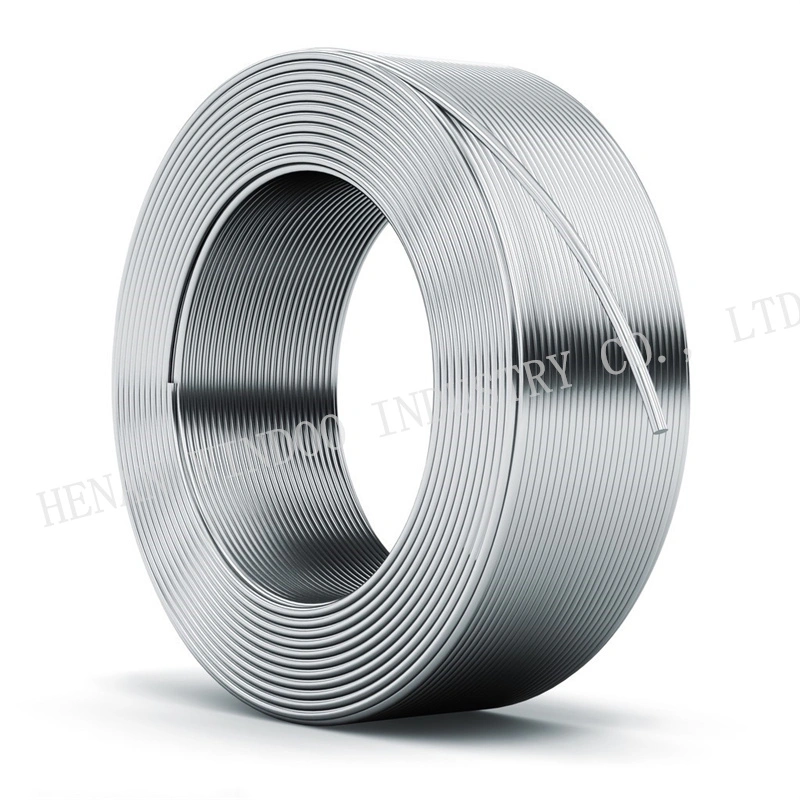Basic Info.
Model NO.
al-mg
Shape
Round Wire
Conductor Material
Al-Mg
Transport Package
Pallet
Specification
0.12-1.00
Trademark
windoo
Origin
China
HS Code
85441900
Production Capacity
2500t/Year
Packaging & Delivery
Package Size
13.00cm * 13.00cm * 20.00cm
Package Gross Weight
5.000kg
Product Description
ALUMINUM MAGNESIUM ALLOY WIRES

The main element of aluminum-magnesium alloy aluminum wire is aluminum, and then a small amount of magnesium or other metal materials is added to enhance its hardness. The aluminum alloy wire with Mg as the main additive element is also called anti-rust aluminum alloy because of its good corrosion resistance. Because it is a metal, its thermal conductivity and strength are particularly outstanding

Aluminum magnesium alloy wire features:
Aluminum-magnesium alloy aluminum wire is light in weight, low in density, good in heat dissipation and strong in compression resistance, which can fully meet the requirements of high integration, lightness, miniaturization, anti-collision, electromagnetic shielding and heat dissipation of 3C products. Its hardness is several times that of traditional glass filaments, but its weight is only one-third of the latter.

The process structure and auxiliary materials of aluminum-magnesium wire are different from those of traditional power cables. The conductor of aluminum-magnesium wire adopts the method of pressing and plying aluminum alloy monofilament, and its core compression coefficient reaches 97%. There are obvious differences in the conductor cross-section of copper core cables and aluminum core cables. The core of the aluminum-magnesium wire cable adopts the method of pressing and plying, the conductor section is a round core, and the insulation adopts the insulation technology of three-color co-extruded cross-linked polyethylene. The cores are arranged regularly, and the whole cable is round and flexible. Due to the optimization of the conductor crystal results by the rare earth alloy material added in the smelting process, the aluminum alloy conductor has bright luster and high brightness in the core section, and has obvious sensory difference from the traditional aluminum core cable. The aluminum alloy conductor itself has excellent anti-corrosion performance. , The good corrosion resistance of aluminum alloy conductors can be derived from the inherent anti-corrosion properties of aluminum materials. When the surface is in contact with air, a dense oxide film with a thickness of about 2 to 4 μm will be formed immediately. This oxide film is very dense and particularly resistant. Due to various forms of corrosion, it has the characteristics of withstanding harsh environments, and its actual service life is more than 10 years longer than that of copper cables.

Aluminum magnesium alloy wire composition:
Chemical composition: Mg 3.5, Cr 0.2, Fe 0.15, Cu≤0.05, Zn 0.10, Mn 0.05, Ti 0.1, AL

Aluminum magnesium alloy wire application:
Uses: Window screen, braided tape, shielding braiding of flexible coaxial cables, various audio and video cables, vehicle signal cables, network connection cables, data transmission cables, etc.

Specification:
0.12, 0.15, 0.16, 0.18, 0.23, 0.40, 0.50


The main element of aluminum-magnesium alloy aluminum wire is aluminum, and then a small amount of magnesium or other metal materials is added to enhance its hardness. The aluminum alloy wire with Mg as the main additive element is also called anti-rust aluminum alloy because of its good corrosion resistance. Because it is a metal, its thermal conductivity and strength are particularly outstanding

Aluminum magnesium alloy wire features:
Aluminum-magnesium alloy aluminum wire is light in weight, low in density, good in heat dissipation and strong in compression resistance, which can fully meet the requirements of high integration, lightness, miniaturization, anti-collision, electromagnetic shielding and heat dissipation of 3C products. Its hardness is several times that of traditional glass filaments, but its weight is only one-third of the latter.

The process structure and auxiliary materials of aluminum-magnesium wire are different from those of traditional power cables. The conductor of aluminum-magnesium wire adopts the method of pressing and plying aluminum alloy monofilament, and its core compression coefficient reaches 97%. There are obvious differences in the conductor cross-section of copper core cables and aluminum core cables. The core of the aluminum-magnesium wire cable adopts the method of pressing and plying, the conductor section is a round core, and the insulation adopts the insulation technology of three-color co-extruded cross-linked polyethylene. The cores are arranged regularly, and the whole cable is round and flexible. Due to the optimization of the conductor crystal results by the rare earth alloy material added in the smelting process, the aluminum alloy conductor has bright luster and high brightness in the core section, and has obvious sensory difference from the traditional aluminum core cable. The aluminum alloy conductor itself has excellent anti-corrosion performance. , The good corrosion resistance of aluminum alloy conductors can be derived from the inherent anti-corrosion properties of aluminum materials. When the surface is in contact with air, a dense oxide film with a thickness of about 2 to 4 μm will be formed immediately. This oxide film is very dense and particularly resistant. Due to various forms of corrosion, it has the characteristics of withstanding harsh environments, and its actual service life is more than 10 years longer than that of copper cables.

Aluminum magnesium alloy wire composition:
Chemical composition: Mg 3.5, Cr 0.2, Fe 0.15, Cu≤0.05, Zn 0.10, Mn 0.05, Ti 0.1, AL

Aluminum magnesium alloy wire application:
Uses: Window screen, braided tape, shielding braiding of flexible coaxial cables, various audio and video cables, vehicle signal cables, network connection cables, data transmission cables, etc.

Specification:
0.12, 0.15, 0.16, 0.18, 0.23, 0.40, 0.50







